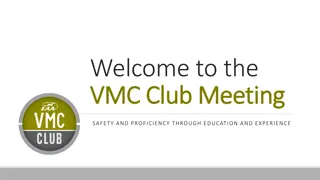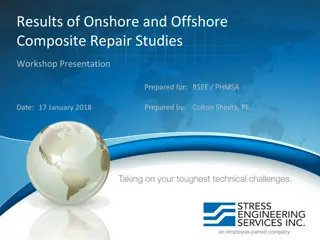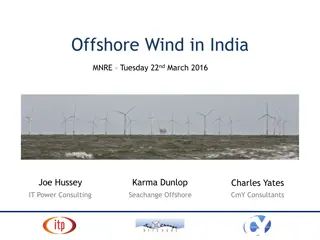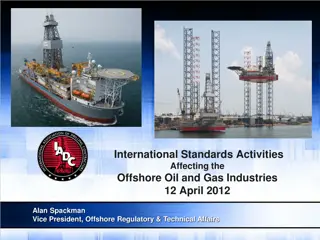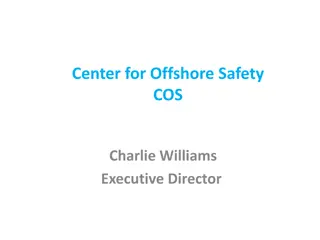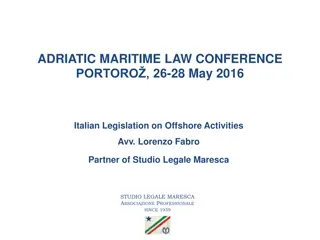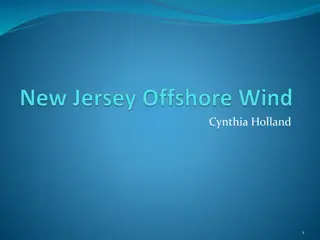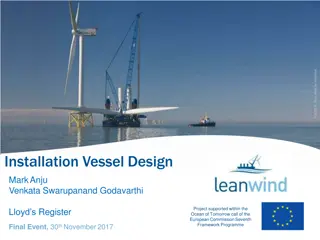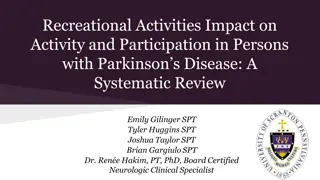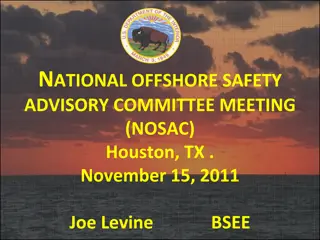Costs and Benefits of Emergency Locator Beacons for Recreational Vessels Offshore
Explore the potential benefits and costs associated with the use of Emergency Locator Beacons (ELBs) for recreational vessels offshore. The presentation to NBSAC in 2012 highlights reduced search efforts, quicker on-scene responses, and the annualized costs of ELBs. Considerations also include the expensive nature of search operations and the need for defining ELBs, understanding compliance, and evaluating returns on investment.
Download Presentation

Please find below an Image/Link to download the presentation.
The content on the website is provided AS IS for your information and personal use only. It may not be sold, licensed, or shared on other websites without obtaining consent from the author. Download presentation by click this link. If you encounter any issues during the download, it is possible that the publisher has removed the file from their server.
E N D
Presentation Transcript
What are costs and benefits of ELBs for recreational vessels offshore? Presentation to NBSAC 09 Nov 2012
Outline NBSAC charge Background taking the search out of search and rescue Potential benefits and costs Five main objectives Understanding the way forward Recommendations to the Council Resolution 2
Charge Should the USCG require the use of emergency locator beacons (ELBs) on vessels 3NM or more offshore? With the high costs associated with search and rescue operations in both lives and property, it seems logical that an in-depth review of a carriage requirement for VHF and ELBs be undertaken NBSAC was requested to offer advice on this potential rulemaking 3
Potential benefits and costs Benefits Reduced search effort On scene sooner, therefore, more lives saved and possibly less property damage Costs Annualized costs of ELBs Unnecessary searches as result of false positives In principle these can all be calculated; data gathering now underway 4
Searches can be very expensive CG reimbursable standard rates have been developed for calculating search costs These resources can be quite expensive, particularly if multiple SRUs are involved 5
Five main objectives Define what an ELB is Understand the devices and their capabilities Illustrate the system capabilities Ensure compliance and registration Compile the data and evaluate the return on investment
Competing possible technologies We examined many device types in our analysis and considered various aspects of their performance, including reliability, cost, effective range, type of message communicated, and others. Of great interest was the compatibility of the type of device with the rescuers who are likely to be called upon. Some of these devices are in their infancy, and may prove to be very effective communication tools in the future, but cannot be depended on to the degree that other, more established tools can. 8
A model for analysis A spread sheet model has been developed that calculates both costs and benefits. Inputs include: Number of recreational vessels that go more than x miles offshore; offshore trips per year; average persons per trip; fraction of boats equipped with ELBs; probability that offshore trip results in distress case Probabilities of lives lost given known or unknown locations; false positive probabilities for ELBs; likelihoods that false positive leads to search; cost of false alarm response 9
Preliminary data shows search cost differences Cost per search 10
Data needs SAR data on searches, costs, availability of ELBs, lives lost, lives saved, etc. Technical and cost data on ELBs (e.g., false positive rates) Exposure data from National Survey (e.g., number of recreational vessels and trips per vessel beyond various distances from shore) 11
A major determinant of benefits Lives saved are major determinants of net benefits Evidence supports conclusion that early rescue results in fewer lives lost Standard assumption is that cost of life lost is $6.3 million per person for cost benefit calculations Preliminary calculations suggest that 10 lives might be saved annually if ELBs were used; net benefits on this assumption are positive12
Results to Date Exploratory data analysis (EDA) suggests that benefits are likely to outweigh costs EDA useful for screening, but not regulation Adjudicatory data analysis with additional data required to justify possible regulations; this analysis should be performed by CG personnel 13
Understanding the way forward Using plausible values for various inputs suggests that ELBs likely to be cost- effective; results are very sensitive to assumptions regarding lives saved with and without ELBs Data gathering continuing Some calculations will require results from National Boating Survey 14
Recommendation to the Council 1. Effective 7/1/2015, all US recreational vessels operating more than 3nm offshore from the coastline of the United States, shall carry an Emergency Locator Beacon, which will be properly registered. The requirement to carry an emergency locator beacon is waived for US recreational vessels operating between 3 to 20 nautical miles off the coast of the continental United States, Hawaii, Guam, Puerto Rico the U.S. Virgin Islands, and the shoreline of the Great Lakes provided the vessel carries a VHF-DSC Marine radiotelephone (fixed mount or handheld) with connected or integral GPS positioning capability and a programmed MMSI number. 2. For the purposes of this regulation, the definition of an Emergency Locator Beacon shall be a radio beacon that can be used for emergency locating purposes for a recreational boater. The term includes a Coast Guard approved Emergency Position Indicating Radio Beacon (EPIRB), Personal Locator Beacon (PLB), or other device approved by the Coast Guard for this purpose. Note: This definition would apply to vessels operating beyond 3 nautical miles from the baselines from which the territorial sea of the United States is measured or beyond 3 nautical miles from the coastline of the Great Lakes. 15
Recommendation to the Council Recommend that the USCG conduct additional analyses to develop accurate measures of costs and benefits Recommend that the USCG continue outreach campaigns aimed at illustrating system capabilities, Rescue 21 operations, changes in VHF requirements and registration guidelines Recommend that the USCG publish device characteristics to educate the boating public on available technologies 16
Questions & Answer Session 17











